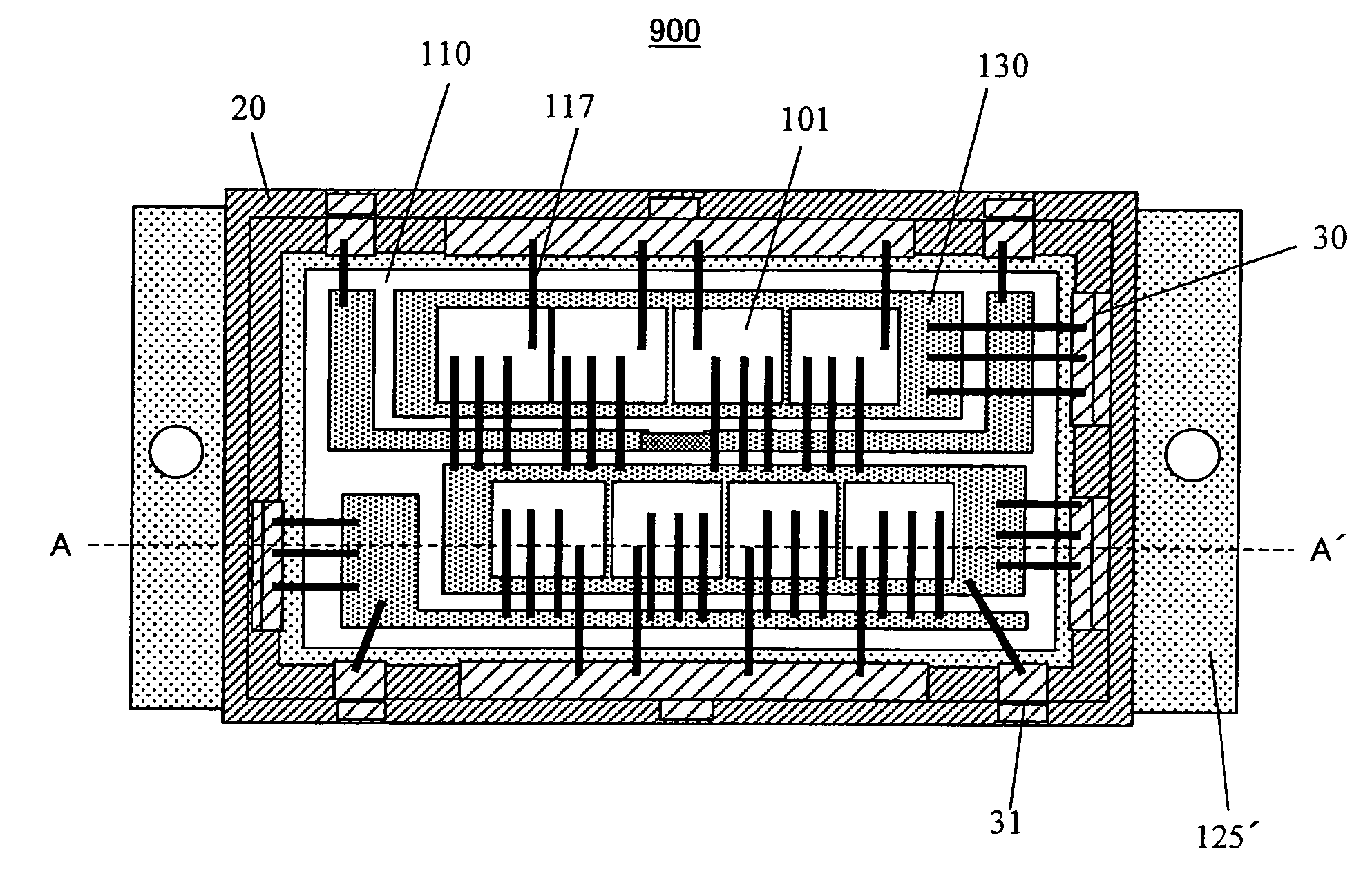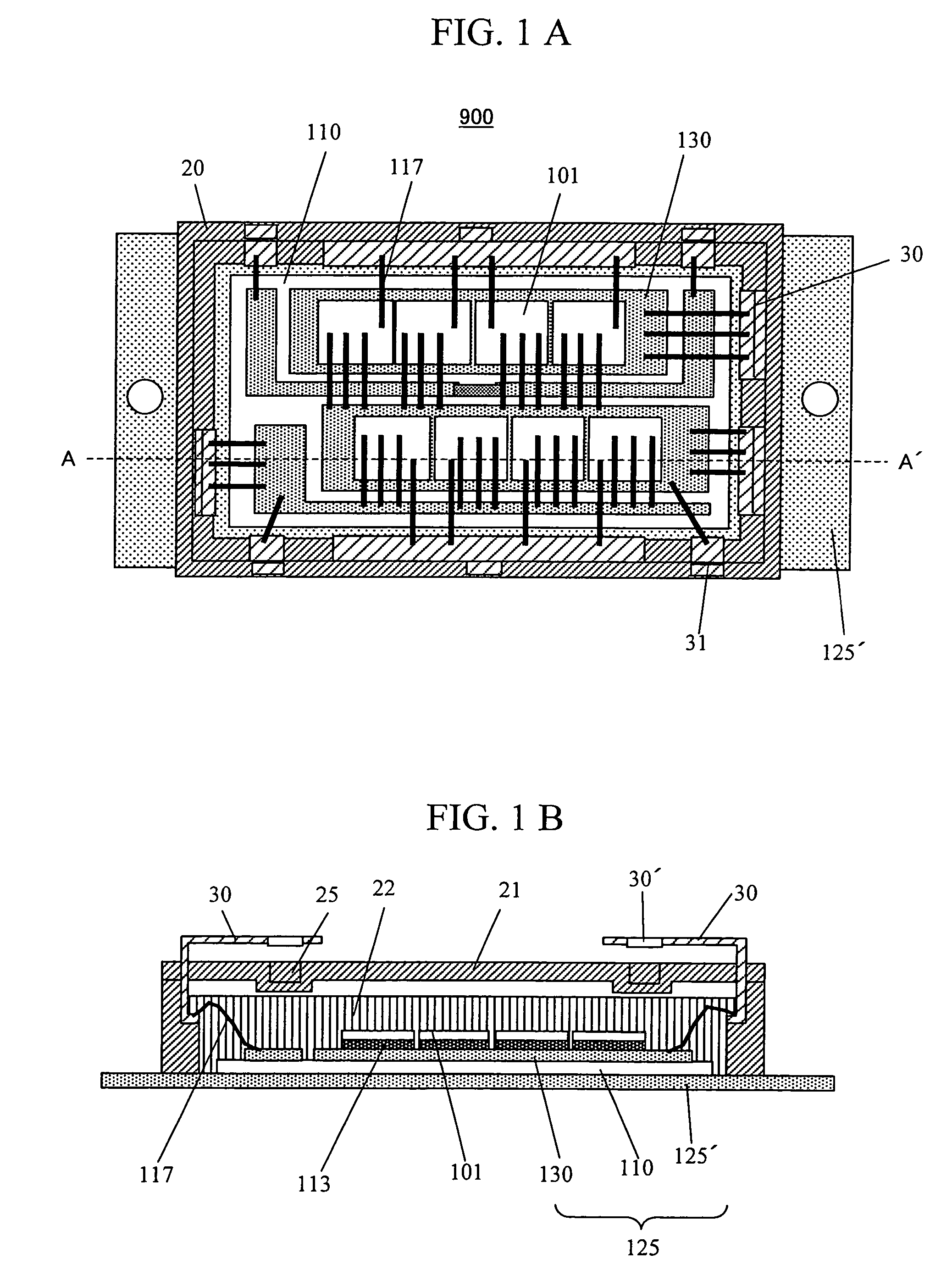Circuit board and semiconductor device using the same
a technology of circuit board and semiconductor device, which is applied in the direction of printed circuit, printed circuit stress/warp reduction, conductive pattern reinforcement, etc., can solve the problems of easy deterioration of reliability, large area of circuit board and brazing portion, and breakdown of ceramic insulated board having brittle properties in mechanical structure, etc., to achieve excellent heat radiation property, reduce thermal stress or thermal strain, and low cost
- Summary
- Abstract
- Description
- Claims
- Application Information
AI Technical Summary
Benefits of technology
Problems solved by technology
Method used
Image
Examples
first embodiment
[0047] A semiconductor device as an embodiment of the present invention will be described below. First, the semiconductor device as the present invention will be described with reference to the accompanying drawings.
[0048]FIG. 1A and FIG. 1B illustrate examples of a basic structure of a semiconductor device as an embodiment of the present invention. FIG. 1A is a plan view of the semiconductor device, while FIG. 1B is a cross-sectional view along the line A-A′ in FIG. 1A. As illustrated in FIG. 1A and FIG. 1B, a semiconductor device 900 in this embodiment has a structure that a MOSFET element base material 101 is mounted as a semiconductor base material on a silicon nitride board 110 as a ceramics insulating board and a copper wiring board 130 provided on the silicon nitride board 110. Moreover, a polyphenyl sulphide resin case 20 provided with a main terminal 30 and an auxiliary terminal 31 is mounted to an insulated board (circuit board) 125.
[0049] In this embodiment, the insulate...
fourth embodiment
[0086]FIGS. 11A, 11B, and 11C are respectively a plan view of the front surface, a cross-sectional view and a plan view of the rear surface illustrating in detail an example of the structure of the composite metal board 125 used in the semiconductor device of this FIGS. 14A to 14D illustrate the principal manufacturing processes of the insulated semiconductor device of this embodiment. First, the manufacturing processes of the insulated board 125 will be described with reference to FIGS. 14A to 14D. A ceramics board is prepared first (FIG. 14A). After the Ag—Cu—Ti system brazing material paste is printed on the surface (front surface) of the ceramics board 110, a metal board (Cu board) for wiring is laminated on the front surface of the ceramics board 110, and the metal board 130a and ceramics board 110 are brazed (braze is designated as reference numeral 120b) through the heat treatment of the laminated body (FIG. 14B). Thereafter, the metal board 130a is etched preferably for sim...
sixth embodiment
[0096] Next, the present invention will be described with reference to the accompanying drawings. This embodiment may be adapted in common to all embodiments described above. FIGS. 12A and 12B schematically illustrate the insulated semiconductor device manufactured using the insulated board of this embodiment, while FIGS. 12C and 12D are schematically illustrate the insulated semiconductor device using an ordinary insulated board. FIGS. 12A and 12B are corresponding to each other. This embodiment will be described through comparison of these devices with reference to FIG. 12A to 12D.
PUM
| Property | Measurement | Unit |
|---|---|---|
| thickness | aaaaa | aaaaa |
| thickness | aaaaa | aaaaa |
| thickness | aaaaa | aaaaa |
Abstract
Description
Claims
Application Information
 Login to View More
Login to View More - R&D
- Intellectual Property
- Life Sciences
- Materials
- Tech Scout
- Unparalleled Data Quality
- Higher Quality Content
- 60% Fewer Hallucinations
Browse by: Latest US Patents, China's latest patents, Technical Efficacy Thesaurus, Application Domain, Technology Topic, Popular Technical Reports.
© 2025 PatSnap. All rights reserved.Legal|Privacy policy|Modern Slavery Act Transparency Statement|Sitemap|About US| Contact US: help@patsnap.com



